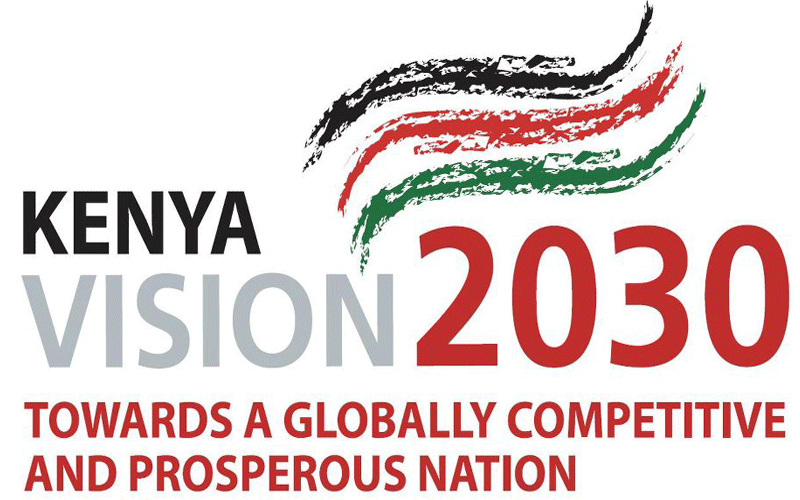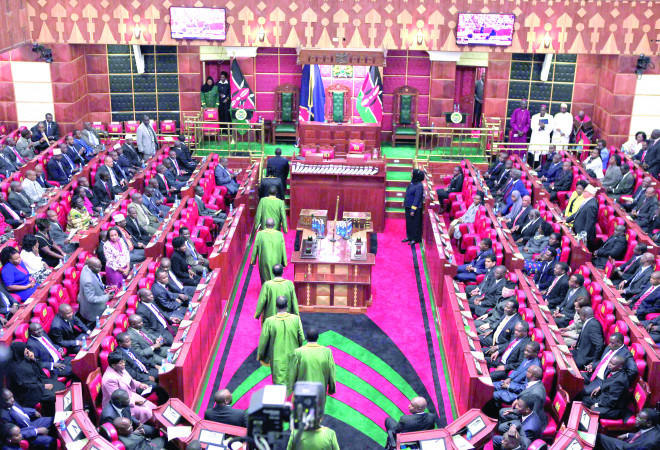What’s the future of Big Four agenda ahead of 2022?

Joan Rotino
The Big Four agenda is an economic blueprint initiated by the government to foster economic development and play a critical role in eradicating extreme poverty.
The agenda, which has four key pillars focusing on manufacturing, food and nutrition security, universal health coverage and affordable housing, are integrated into the Third Medium Term Plan of the Kenya Vision 2030.
Under the manufacturing pillar, the government aims to raise the manufacturing sectors’ share of GDP to 15 per cent by next year which is poised to improve the overall economic wellbeing, create jobs and reduce poverty.
Under the food security and nutrition pillar, the government aims to expand food production and supply thereby reducing food prices to ensure accessibility and affordability.
On the other hand, by focusing on universal health coverage, the government aims to provide and guarantee quality and affordable healthcare for all.
The last pillar seeks to increase access to affordable and decent housing through construction of at least 500,000 affordable houses by 2022.
But how much has been achieved and what’s next with the current government only having about a year in power? Could this be the end of the Big Four agenda?
The implementation process has been slow so far and it might be difficult to achieve the intended objectives by the end of the current governments’ office term.
The budget allocations have been inconsistent with the related projects having been allocated Sh128.3 billion in 2020/21.
This was a massive drop from Sh450.9 billion and Sh400 billion which were allocated in the 2019/20 and 2018/19, respectively.
The reduced funding has stirred up concerns that the Jubilee regime may not achieve the objectives of the Big Four agenda.
The Covid pandemic slowed down the implementation of the different projects under the Big Four agenda due to the huge negative impact the pandemic has had on the economy.
The pandemic has hit revenue collections as key economic drivers such as agriculture, tourism and manufacturing have declined over the same period.
Manufacturing has been had hit with far-reaching implications being experienced including reduced output and workforce.
The government also scrapped a recently introduced tax incentive that provided manufacturers with an additional deduction equivalent to 30% of their electricity cost under specified conditions.
The repeal of this incentive left the manufacturing sector vulnerable to high energy costs which goes against the Big Four agenda.
In a positive development, however, local industries have increased investments through innovation that are likely to create jobs, generate revenue.
TVET’s and ICT are key enablers of the Big Four agenda. Through TVET institutions, the government has aggressively implemented a special technical training programme that targets to equip at least five million Kenyans with select hands-on skills such as mechanic, electrical engineering, welding, masonry, carpentry, tailoring, hospitality, and entertainment and beauty courses.
Public-Private Partnerships are also a key in achieving Vision 2030 and can be a critical cog to the manufacturing sector since most projects are usually capital intensive and with constrained resource allocation.
Numerous projects under the affordable housing are also ongoing. The government is currently constructing housing units, for example the 1900 units currently being constructed through a public-private partnership in Mombasa County.
Under Universal Health Coverage, the Ministry of Health had initiated the process of finalizing the NHIF reforms that include among other things, pooling heath funds through taxes, compulsory insurance contributions and voluntary health schemes to help minimize the financial risk of illness across the population.
Kenya has the potential to be one of Africa’s success stories by 2030. It is, however, important to address the challenges that Kenya faces in order to realize the objectives of the Big Four agenda.
Challenges such as long-term policy instability, poor governance, lack of accountability, lack of a supportive regulatory environment and misallocation of funds.
The success of the Big Four agenda will also largely depend on collaboration and partnerships at all levels of government.
There has to be a successful partnership between the national government and the county governments for a successful implementation of all the four pillars of the under the Big Four agenda.
By and large, we are living in unprecedented times but as a country, we need to go back to the drawing board and re-evaluate our performance against expectations. — The writer is the Group Head, HR & Administration at CPF Financial Services












